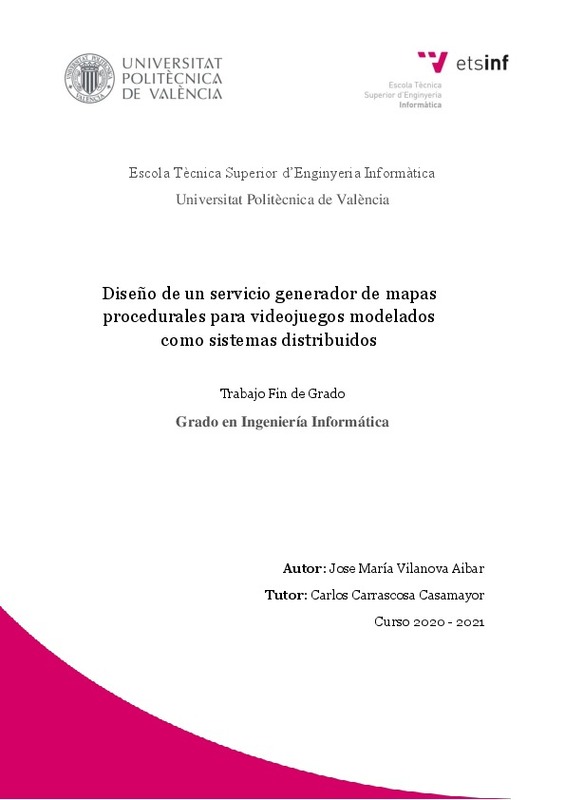|
Resumen:
|
[ES] La industria del videojuego crece de forma exponencial a medida que el tiempo avanza, y con
ella también lo hacen la complejidad y profundidad de los videojuegos que se crean y la exigencia
por parte de los usuarios.
...[+]
[ES] La industria del videojuego crece de forma exponencial a medida que el tiempo avanza, y con
ella también lo hacen la complejidad y profundidad de los videojuegos que se crean y la exigencia
por parte de los usuarios.
Cada vez se necesita más personal y tiempo para poder producir un videojuego de calidad, lo
que ha despertado en los programadores la necesidad de reducir este coste lo máximo posible,
creando diversas técnicas de automatización que hacen el trabajo de un desarrollador de
videojuegos mucho más sencillo.
De esta necesidad nació una técnica que se lleva utilizando y perfeccionando desde hace ya
varias décadas, la generación procedural, un método que nos permite delegar al sistema las tareas
que puedan ser resueltas de forma automatizada, como por ejemplo, la creación de un mapa o
escenario.
Este trabajo emerge del interés por la industria del videojuego y la curiosidad que este campo
de la programación despierta en mí.
El principal objetivo del trabajo es la creación de un sistema que permita a sus usuarios obtener
modelos de mapas generados a partir de la aplicación de las técnicas adecuadas de generación
procedural. Este sistema debe permitir al usuario ajustar ciertos parámetros que modificarán su
comportamiento para ajustar el resultado lo máximo posible a las necesidades del usuario.
Para ello se va a realizar una profunda investigación acerca de la técnica para conocer cada
una de sus variantes y utilizar la que mejor se adecúe a el trabajo.
En una primera instancia se va a crear un videojuego estilo roguelike y otro en con perspectiva
en primera persona con los que se probará la efectividad de la implementación, para
posteriormente validar su uso en sistemas distribuidos utilizando para ello una variante del
videojuego JGomas.
[-]
[EN] The video game industry grows exponentially as time progresses, and with it, so do the
complexity and depth of the video games that are created as well as the demands of users.
More and more staff and time are ...[+]
[EN] The video game industry grows exponentially as time progresses, and with it, so do the
complexity and depth of the video games that are created as well as the demands of users.
More and more staff and time are needed to produce a quality video game, which has awakened
in programmers the need to reduce this cost as much as possible, creating various automation
techniques that make the work of a video game developer much easier.
From this need was born a technique that has been used and perfected for several decades,
procedural generation, a method that allows us to delegate tasks to the system that can be solved
in an automated way, such as the creation of a map or scenario. .
This work emerges from the interest in the video game industry and the curiosity that this field
of programming arouses in me.
The main objective of the work is the creation of a system that allows its users to obtain map
models generated from the application of the appropriate procedural generation techniques. This
system must allow the user to adjust certain parameters that will modify their behavior to adjust
the result as much as possible to the user's needs.
To do this, a deep investigation will be carried out about the technique to know each of its
variants and use the one that best suits the job.
In the first instance, a roguelike-style video game and another in a first-person perspective will
be created, with which the effectiveness of the implementation will be tested to later validate its
use in distributed systems using a variant of the JGomas video game
[-]
|







